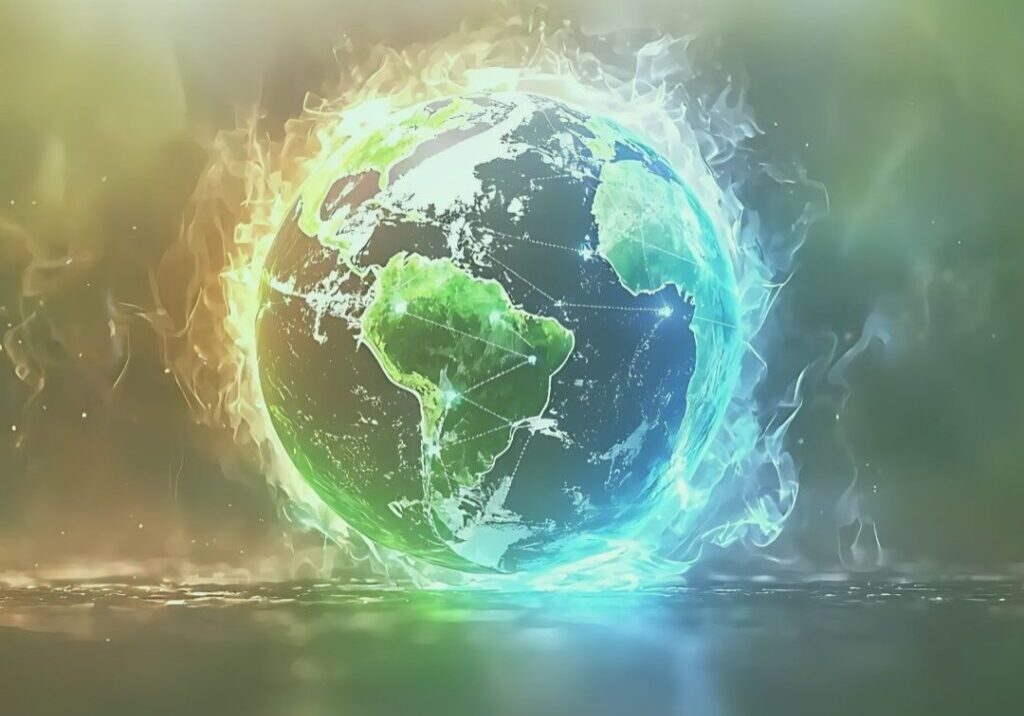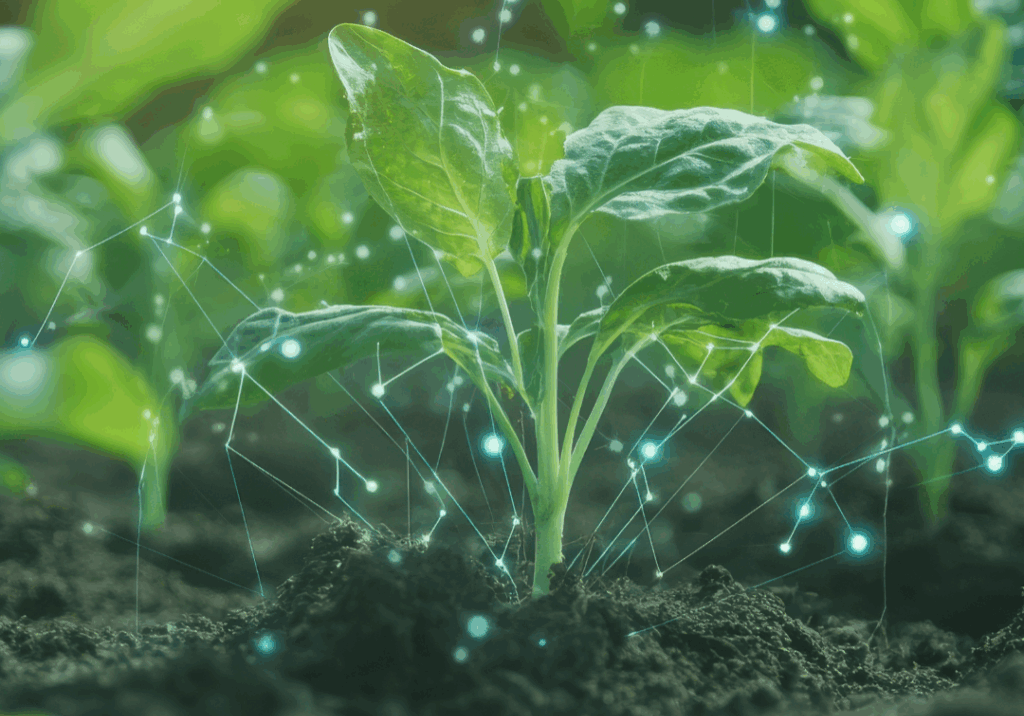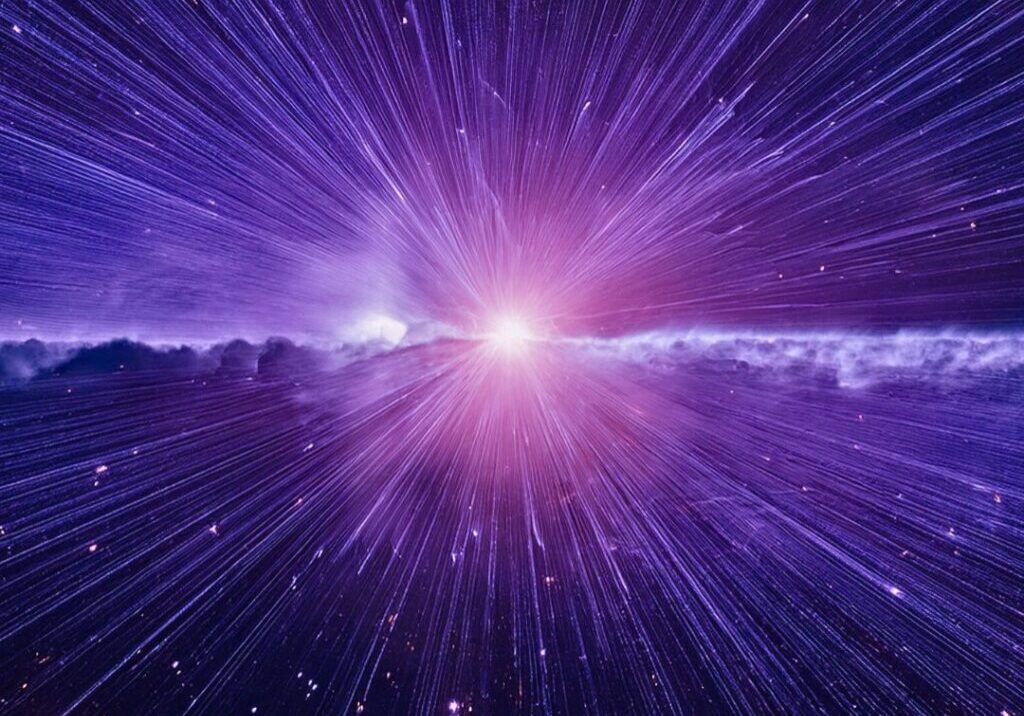Seeds of a New Eden
I invite you to take a seed and quietly behold it in your hand. It might be a ‘helicopter’ seed, a garden seed, a pinecone, or another seed that crosses your daily path. Now imagine the journey of this seed. How does it travel and how is that related to its design? From what ancestral lineage has it evolved? Nature writer Loren Eiseley reflects, “Seeds on the coyote’s tail, seeds on the hunter’s coat, thistledown mounting on the winds – all were somehow triumphing over life’s limitations. Yet the ability to do this had not been with them at the beginning. It was the product of endless effort and experiment.”[1] And somewhere in here, he muses, were humans themselves. Perhaps we might also see ourselves in the seed.
A seed’s viability is tied to the organizing principles of the universe, which, according to Brian Swimme & Thomas Berry, are subjectivity (or autopoiesis), differentiation and communion.[2] Differentiation is the process whereby matter becomes more complex and diverse as the universe unfolds.[3] Subjectivity is an interior dimension of things and capacity for self-manifestation[4] in which every part of creation uniquely reveals divine love and presence. Communion is the capacity for the components of the universe to bond together and unify into “a differentiated web of relationships around sentient centers of creativity.”[5] Swimme and Berry warn that many of our present ways of being in the world violate these basic principles, causing negative consequences for the planet. Violence, mass shootings, and war also violate these basic principles.
There is a direct connection between how we treat the Earth and how we treat one another. Deep ecologists, ecofeminists and others[6] identify the disconnection from the natural world as a root cause of our present ecological crisis. This disconnection, they maintain, both shapes and is shaped by a mechanistic conceptualization of the natural world and its subsequent objectification and commodification, robbing creation of its subjectivity. According to some ecofeminist readings of history, the natural world was first feminized and then, with the rise of modern science, objectified, resulting in its interrogation, rape and abuse.
In EcoJustice Education (2011) Rebecca A. Martusewicz, Jeff Edmundson and John Lupinacci (2011), urge us to recognize and analyze the “deep cultural assumptions underlying modern thinking that undermine local and global ecosystems essential to life” (p. 10).[7] They observe that “…schools often reproduce the inequalities of race, class, gender, homophobia, and other oppressions, but they have little understanding of how these inequalities intertwine with the suffering of non-human creatures, the loss of habitat, the degradation of soil, water, forests, or air” (p. 19) The authors argue that value-hierarchized ways of thinking are structured by a logic of domination, resulting in ‘isms’ such as sexism, racism, ethnocentrism and anthropocentrism.
With the post-World War II rise of industrial agriculture, the objectification of nature was expressed in conceptualizations of farming as warfare and farmers as soldiers, using the newest chemical products to destroy insects, mold and disease.[8] And, with the aid of technology, some hybrid and genetically modified plants are conceived of as operating systems and software, and registered as intellectual property. Potatoes become pesticides and seeds become suicidal terminators.[9] The image of war, when applied to agriculture, in the end becomes a war against humanity, poisoning the plants, soils, air and watersheds that sustain human life, and a terminator mentality threatens to exterminate life as we know it. These conceptualizations of nature result in manipulative technologies that do not honor the intrinsic differentiated nature, subjectivity or autopoiesis of the plants, and can hinder their ability to enter into communion with other elements of nature, including the human body. Agricultural monocultures are echoed by monocultures of the mind.[10] Earth, as nurturing mother, turns on her children; the bread and wine of our sacramental lives poisoned.
Personifications of Earth as female are only ecologically helpful when a culture holds women in reverence. In Finding the Mother Tree: Discovering the Wisdom of the Forest,[11] Susan Simard presents a life-giving image of nature based on forest ecology. Simard explains that trees are social creatures that are able to communicate through mycorrhizal webs, nurture one another and heal themselves, their families and communities. She maps the dynamics of self-regeneration of old-growth forests through parental relationships whereby old trees nurture the young, which are, over time, able to contribute back to the forest community. Nurturing the young trees, especially towards the end of the Mother Tree’s life, requires a self-emptying or kenosis that provides insight into the Christic dimension[12] of the forest. Simard’s discoveries resonate with her own life story, as she struggled with cancer and sought to give all she could to her children before she passed away. Fortunately, she survived the cancer, and her writings give us a fresh and inviting way to envision ourselves within the larger cosmological order.
I invite you to take another look at the seed in your hand. Our journey toward wholeness begins like a tiny seed, and then the first leaves of the sprouting seed appear. These first leaves are called cotyledons. Although they look like real leaves, they are not true leaves, but rather, part of the seed’s embryo, which provides nutrients to the seedling until its true leaves unfold. When seedlings are in this stage of growth, it is often difficult to tell one kind of plant from another. We might think of this stage as our universal call to love; a call that we do not lose as we differentiate.
After the cotyledon stage our spiritual journey, we grow new, ‘true’ leaves that identify us for a distinct purpose that is ours alone; a purpose that we are free to choose or reject. We can trust that God, who is love, will not ask us to be someone we are not.[13] David Whyte’s poem, “Sweet Darkness,” speaks to the idea of self-emptying in order to become more; a choice that enables us to be in authentic community with other members of creation:
Give up all the other worlds
Except the one to which you belong.
Sometimes it takes darkness and the sweet
Confinement of your aloneness
To learn anything or anyone
that does not bring you alive
is too small for you.”[14]
This redemptive choice, which we make many times throughout our lives, is a counter force to the violence, war and environmental destruction of our times. It thus offers healing and a viable way forward. Genesis 1[15] stresses the importance of seed-bearing plants and fruit. The seeds of a new Eden are seeds of peace, seeds of our true cosmic selves, sown in fidelity with the life-giving dynamics of our sacred universe.
Notes:
[1][1] Eiseley, L. How flowers changed the world. The star thrower. San Diego: Harcourt Brace and Company, 1978, p. 71.
[2] Swimme, B., and Berry, T., The Universe Story from the Primordial Flaring Forth to the Ecozoic Era. San Francisco: HarperCollins Publishers, 1992.
[3] Swimme, B., and Berry, T., p.73.
[4] Swimme and Berry, p.74.
[5] Swimme and Berry, p.77.
[6] Although Deep Ecology and Ecofeminism are distinctive schools of thought, they share some core views in common. They are but two of a large body of thought on ecology. In the Appendix to Integral Ecology: Uniting Multiple Perspectives on the Natural World, Sean Esbjorn-Hargens and Michael E. Zimmerman present “200+ Perspectives on NATURE: Major, Minor, and Emerging Schools of Ecology, Environmental Studies, and Ecological Thought,” each with its own unique perspective. (Boston & London: Integral Books, 2009).
[7]Martusewicz, R. A., Edmundson, J. & Lupinacci, J. EcoJustice Education, Toward Diverse, Democratic, and Sustainable Communities. Routledge, 2nd Ed., 2014. p. 10.
[8] Kimbrell, A. (Ed.) Fatal Harvest: The Tragedy of Industrial Agriculture, Washington, DC: Island Press, 2002.
[9] See Ruiz-Marrero, C. (2002). Terminator seeds: The neutron bomb of agriculture (March 20) CorpWatch. Available:
http://www.corpwatch.org/issues/PID.jsp?articleid=2088 [2003, April 11].
[10] Kimbrell covers the topic of monoculture extensively in Fatal Harvest. Also see: Shiva, V. Monocultures of the Mind: Perspectives on Biodiversity and Biotechnology. Penang, Malaysia: Third World Network: London: ed Books, 1993.
[11] Simard, S. Finding the Mother Tree: Discovering the Wisdom of the Forest. New York: Alfred A. Knopf, 2021.
[12] Ilia Delio maintains that there is a Christic or divine depth dimension within every living thing. See: https://youtu.be/q7m4DmXhgVY.
[13] Pujos, N. & Ariniello, A. Discerning Your Vocation, A Catholic Guide for Young Adults. Statton Island, NY: Pauline Publishing, 2014, p. 7.
[14] Whyte, D. “Sweet Darkness,” from The House of Belonging, Dec. 12, 2018, https://onbeing.org/poetry/sweet-darkness/
[15] Genesis 1:11-13, 29
 View print-friendly version
View print-friendly version
6 Comments
Related Posts

The Earth Groans, AI Grows: Who Guides the Flame?
In this critical moment of planetary history, where ecosystems collapse, artificial intelligence proliferates, and human meaning trembles on the edge of uncertainty, we are faced with a profound question: What kind…


Joe, thanks so much for your response! I will explore the videos you suggest and get back to you. What you write here is so beautifully said and much appreciated. With that said, I don’t see science and religion as being in competition, but rather two different, complementary ways of seeking truth, each with their own methods.
Yes, Emily. There are energy informed
patterns (images) that connect (entangle), repeat themselves, and nest within one another at all scales as holons, quark to quasar — like in a Russian doll or Chinese box. Their unity is seamless and one, joined by a common element and pole of attraction (synthesis). Both science and religion call this mystery element by different names. Religion calls it God “in whom all things consist and are held together,” and who “fills all things.” Science identifies it as “fundamental forces and elementary particles.” In reality, science and spirituality are competing partial truths whose source, energies, and patterns begin (Alpha) and end (Omega) in the same singularity, and manifest in the cycles of nature as in an electric circuit. “Unto the place from whence the rivers come, thither they return again” (Eccles. 1:7). Teilhard left it for us to create a novel paradigm (functional cosmology) to explain same. Asked Teilhard, “who will at last give us the meta-Christianity we are looking for?” For a pictorial clue to this mythical synthesis, google 2 brief YouTube videos, both by Critobal Vila, ‘Nature by Numbers,’ and ‘Infinite Patterns.’ Thanks for the tip on Barbara Brown Taylor’s ‘third alternative’ pieces. I believe the above videos also image same, set to music.
Joe, I love your idea of “a small, silent, unobtrusive power that’s wisely and steadily directed which is the most effective and productive.” I think it aligns with Robert Nicastro’s piece on “A Whiteheadian Response: The God of Persuasion,” in which he discusses God’s persuasive power. Like you, I connect the seed with the originating moment of the universe from a singularity. I have been working on garden-based theology for awhile and this idea is central to it. Even though I have been gardening for decades, I still cannot fathom how a plant such as a watermelon emerges from a seed, yet the soil is still there for the most part. So where does the biomass come from? This helps me to imagine the dynamics of the universe on a smaller scale. Still, it is a mystery to me.
Your comment also reminds me of Barbara Brown Taylor’s chapter on “The Evolution of Praise” in her book “The Luminous Web, Essays on Science and Religion” (2000). Have you read it? She writes: “Between Genesis and Darwin lies a third alternative few of us learned about in school: a creation dependent neither on a literal reading of the Bible nor on the random variations of genes but on laws of complexity we are only beginning to understand. In this story of creation, there is something beyond blind chance at work in evolution. Instead of a collection of genetic accidents, there are patterns more like blueprints that tend to organize cells the same basic way every time. These patterns explain why something as biologically complex as an eyeball can evolve in forty separate lineages” (24).
Suzanne, I’m glad you found the piece enlightening! If you like Attenborough’s work, you might also greatly enjoy reading Merlin Sheldrake’s book, “Entangled Life: How Fungi Make our Worlds, Change our Minds and Shape our Futures.” He explores the relationships between trees and fungi in much depth, yet in an accessible and entertaining style.
Like a seed, it’s always a small, silent, unobtrusive power that’s wisely and steadily directed which is the most effective and productive. That is most manifest in nature, as generativity always replicates the hot Big Bang moment of creation where from a condensed point smaller than a pinhead, the entire universe blossomed, and is still blossoming in accord with that blueprint. Sacred energy, power, and effectiveness everywhere ( in the kingdom) increase in inverse ratio to size and notoriety. The best and greatest of God’s servants are considered ‘small’ by the world’s standards. They usually live and die in relative anonymity, enfleshed replicas of s-he who created them, in whose energy and invisible presence (aura) all things silently live, move, and have their being.
I love this view and find it most enlightening. I heard David Attenborough recently talk about mushrooms, and how they are in communion with trees, forming a web of communication among them. This is the kind of revelation that reveals the energy within our sacred Universe, and is so much in tune with all that is written here.